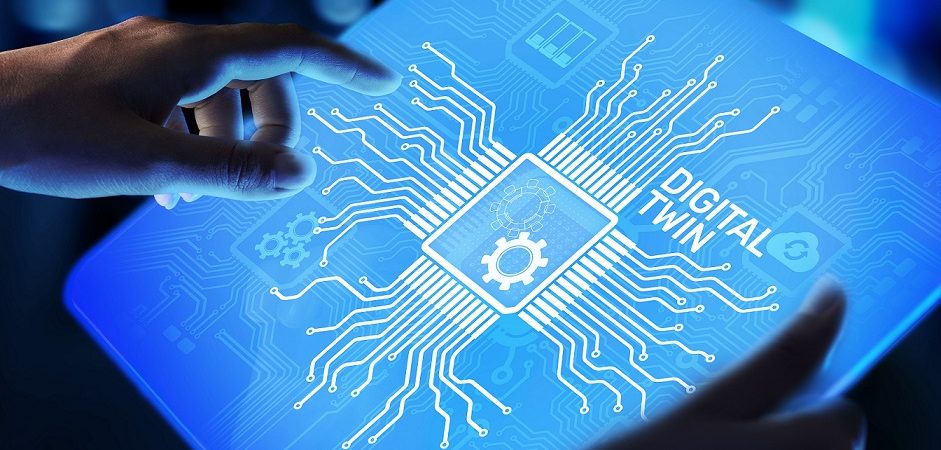Digital Twins seem very familiar to us, as they are quoted and applied in countless science fiction films that cover essential parts of the plot of classics such as Star Wars (1977) or Jurassic Park (1993).
Digital Twins, as their name implies, are copies or replicas of physical elements, such as buildings, facilities, products and vehicles, which assimilate the changes of their physical counterparts in real-time and allow testing and analysis in the virtual world without exposing its structure.
With this, they attend to various tasks, from analysis of structures and time of use of elements and components to reports of expenses for consumption of materials, public services and hours worked.
But Digital Twins are not a novelty. There have been many products and services for several decades to fulfill these tasks in buildings and constructions where total control was indispensable, such as nuclear power plants, military bases, data centers, ports and airports.
The lack of integration between the elements limited a comprehensive vision, apart from needing expert professionals to analyze and program all the features.
Thus, the boom in the use of sensors that provide consistent data of diversity of variables and the development of network systems, together with analytical and Artificial Intelligence applications, all under Internet protocols and the use of automated programming models or Low Code, enable the development of Digital Twins as we know them today.
We can manage intelligent buildings, data centers, facilities, warehouses, medical centers, educational institutions and supermarkets from Digital Twin models, regardless of their size.
Digital Twins reduce risks and increase efficiency in managing the infrastructure, buildings and production process while reducing energy and environmental consumption indicators and insurance overruns.
Research entities such as Gartner, Forrester and IDC list the Digital Twins as one of the key technology trends for this decade. When it comes to digital acceleration, more than a trend, they are the focus of attention for the IT sector.
Accenture’s Technology Vision 2021 Report explains that “The companies that begin to build smart twins of their assets and rebuild their first mirrored environments today will be the ones that will propel industries and the world towards a more agile and intelligent future.”
That same study highlights that 87 percent of the executives interviewed agree that Digital Twins have become essential for organizations to collaborate in strategic alliances in their ecosystems.
For this reason, we invited three experts from the IT industry to answer the question for this edition. They are that Joaquín Saldaña, Director of Strategy and Marketing, Latin America, Huawei; Mario Tonizza, Solutions Engineer, Oracle; and Sebastián Giraldo, Director of the Industrial Automation Division Andean Cluster, Schneider Electric.
Sebastián Giraldo, Director of the Industrial Automation Division of Schneider Electric for the Andean Cluster

Indeed, 2021 has been the year of Digital Transformation in companies worldwide. The scenario of new digital trends encouraged different industries to adapt and accelerate their processes.
This situation clarified that most companies with great effort have managed to survive and get ahead in a less than encouraging outlook thanks to tools and software that collaborate with automation, process and plant monitoring and work to control and manage the operation remotely.
The impact Digital Twins generate in the industry is disruptive by revolutionizing traditional work models, achieving a more futuristic one.
The question that many CEOs ask themselves is, what can we do to adapt and improve the productivity model of organizations? And this is where he highlighted new tools such as the so-called ‘Digital Twin’.
This technology seeks to become a virtual representation of an asset, object, or system in the real world and will be updated and changed as the original product does. Therefore, this resource works with the IoT, Artificial Intelligence, Machine Learning and analytics software.
Digital Twins allow us to obtain a simulation of our entire production environment for maintenance and design improvements. We must point to as investors and decision-makers to impact innovatively and is at the forefront of our organizations.
Without a doubt, acquiring these tools brings a series of benefits such as risk reduction, profitability, sustainability, high availability over time, empowerment, the productivity of staff and the alliance through this tool with other companies that wish to implement it. An aspect that is unquestionably a striking differential between leaders.
It is time for a change. Many companies or traditional plants that have been conventionally implementing processes for years must decide to digitize, a need that is indeed imposed and becoming aware that with these actions, they would become part of the famous industry 4.0.
Looking ahead, understanding what will happen and being able to simulate, make some future forecasts and then apply them in existing facilities, will be something that will give companies greater profitability, maximizing the use of capital.
Joaquín Saldaña, Director of Strategy and Marketing, Latin America, Huawei

Digital Twins is a new derivative of Digital Transformation, but is it that innovative? To understand and study the concept in a simple way, a Digital Twin represents a specific reality.
This concept has been present for years. Engineers and designers commonly talk about models for representing objects or situations. Thus, we can speak of scale models ranging from tidal behavior to wind tunnels, simulated to understand the design process. However, these models have the disadvantage of being a scaled representation of reality. Although it’s challenging to incorporate all the elements, they have proven to be a fundamental tool in design and construction processes.
So, what is the advantage of Digital Twins? ICT evolution now provides the ability to handle large volumes of information, with Big Data; a more extensive number of devices, from IoT, interconnected at the same time (broadband, 5G); and process information in near-real-time (cloud). We can now generate digital ‘models’ utilizing which we can reflect the reality of a specific environment, having multiple variables (images, video, temperature, pressure, position, etc.) dynamically interrelated. The digital representation of all those digital variables that are helping us to know what happens is called the Digital Twin.
Knowing how each variable affects the behavior of reality can now be done directly with ICT, ‘what-if’ scenarios can run to predict behaviors and carry simulations to develop improvements without investing large amounts in making physical models.
Digital Twins applications can be many and very diverse. For instance, it’s possible to make a Digital Twin from a communications base radio, benefiting the operation and maintenance process by allowing all service engineers arriving at a site for the first time to be thoroughly familiar with the environment by knowing it through its Digital Twin. That coming at the site with prior knowledge of the place, of the same work that must do, increasing efficiency significantly. They will no longer spend time recognizing the area before performing their tasks.
Now let’s take this example down to the city level. The so-called Smart Cities allow the generation of Digital Twins in a very agile way, greatly facilitating the analysis and development of improvements for themselves, such as traffic, drainage, transportation, etc., by testing scenarios in digital environments without affecting the actual operation of the city.
Thus, Digital Twins are significant by-products of technologies applied to Digital Transformation, including broadband access, cloud computing, the Internet of Things and Artificial Intelligence. I invite you to incorporate this great concept into your operations and enjoy the Digital Twins’ great capacity in the operations, maintenance, design and improvements of existing systems.
Mario Tonizza, Solutions Engineer, Oracle

Agility in technological transformation has never been so essential to improve business performance as it is now. Using it makes it possible to have all assets in a digital platform, identify failures in operation and correct them at the right time without interruptions. Also, identify opportunities for improvement in the processes through emerging technologies that facilitate predictive analytics and help leaders to have a much broader perspective on possible future scenarios.
We cannot forget that, with the arrival of the industrial age, data has become fundamental for any organization and finding digital tools that help manage and understand it is essential. Therefore, today’s companies are acquiring cutting-edge technology to collect all the data generated in the different phases of the product life cycle and analyze and exploit them to optimize and improve their manufacturing processes and services.
This technological and increasingly autonomous scenario enters what is now known as the Digital Twin (DT). This concept refers to the constantly updated digital representation (in real-time) of the behaviors of physical systems.
What does this mean? This tool can facilitate real-time mirroring of physical systems and interaction with virtual space, rapid comparison between retrospective or estimated data and real-time data.
The autonomous evolution of the represented system is another of its characteristics and the supervision and remote control in real-time (that is, to monitor the system’s performance and remotely control through feedback mechanisms).
All these characteristics have innumerable advantages, among which the following stand out:
Greater efficiency and safety: Mean greater autonomy for humans to focus on more creative and innovative jobs.
Predictive maintenance and scheduling: Through intelligent data analysis, system failures can be detected well in advance, reducing downtime and improving resources productivity.
Scenarios and risks evaluation: Made through the disturbance of the simulated system to synthesize unexpected methods and study the system’s response and the corresponding mitigation strategies.
Better intra- and inter-team effort and collaboration: With greater autonomy and all the information at their fingertips, teams can better use their time in improving teamwork and partnerships that lead to greater productivity.
More efficient and informed decision support systems: The availability of quantitative data and advanced analytics in real-time help make more informed and faster decisions. Different analysis levels can connect, allowing system performance optimization and business visibility.
Better documentation and communication: Information readily available in real-time, combined with automated reports, help to keep stakeholders informed while improving transparency.


